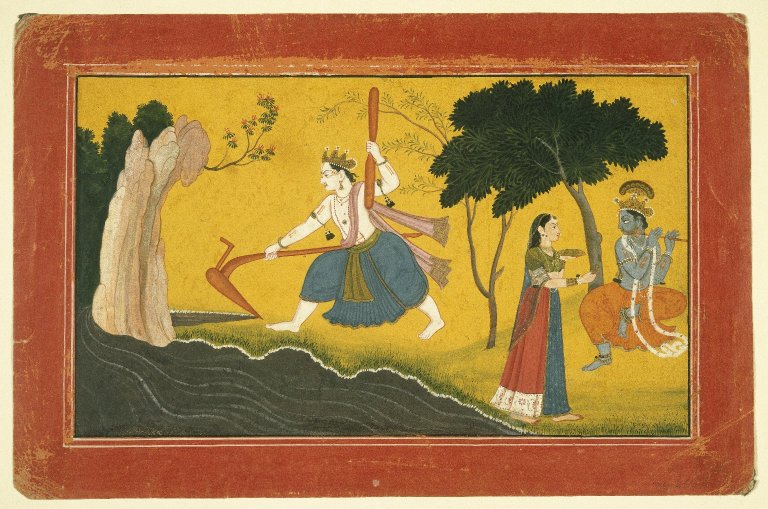Balaram is not spoken of as often as his younger brother Krishna, but he too holds a spot as an avatar of Vishnu. Some put him alongside Krishna as a subsidiary avatar, while others place him independently.
How does Balaram enter the avatar list? It is believed that a year before the birth of Krishna, the embryo of Balaram was transferred from Devaki to Rohini, another wife of Vasudeva, residing at Gokula, to save it from the cruel Kansa. About a year later, he was placed under the care of Nanda and his wife Yashoda, the parents of Krishna, so that the two might be brought up together.
Balaram is often referred to as a form of Shesha, the naga on which Vishnu reclines. The two are inseparable in their divine forms and so too in their mortal presence on earth and in that context, Balaram plays a role similar to that of Lakshman in Ramayana. Many also talk about Balaram’s strength, as a child he slew an asura, Dhenuka, who had taken the form of a donkey. Balaram killed him with his bare hands, picking him up and swirling him up in the air and then finally throwing the carcass high up in a tree. His muscle and heft is also evident in the wrestling ring, he is said to have tutored the Kurus and was also fighting alongside Krishna when he pinned Kansa to the mat.
Most of the stories about the brooding-wrestler-avatar focus on his might. In the Mahabharata, he helps free Samba, Krishna’s son who had been taken prisoner by the Kauravas because he had eloped with Duryodhana’s daughter. Balaram was so angry at the abduction that he dragged the city of Hastinapura (capital of the Kurus) on the tip of his plough, pulling it into the river Ganga. Disaster was averted when Samba was returned.
Balaram has a close association with agrarian cultures. He was also called Halayudha, plough-armed, and ‘Sankarshana, ‘creating a furrow’ and was always seen with a ploughshare. This is an interesting association, especially since his brother Krishna led the cowherds. There are many such contradictions and interesting insights that folk stories about Balarama offer. For instance there is one about how he drags the river Yamuna off her course because she refused to offer her waters to bathe him. Whitney Sanford (Growing stories from India: Religion and the Fate of Agriculture) says that such stories represent the violence with which early agriculturists dealt with nature, cutting up forests, digging up resources and diverting rivers and so on.
Story collected by: Utkarsh Patel Source: Hindu Mythology, Wilkins, W. J. Image details: Brooklyn Museum
